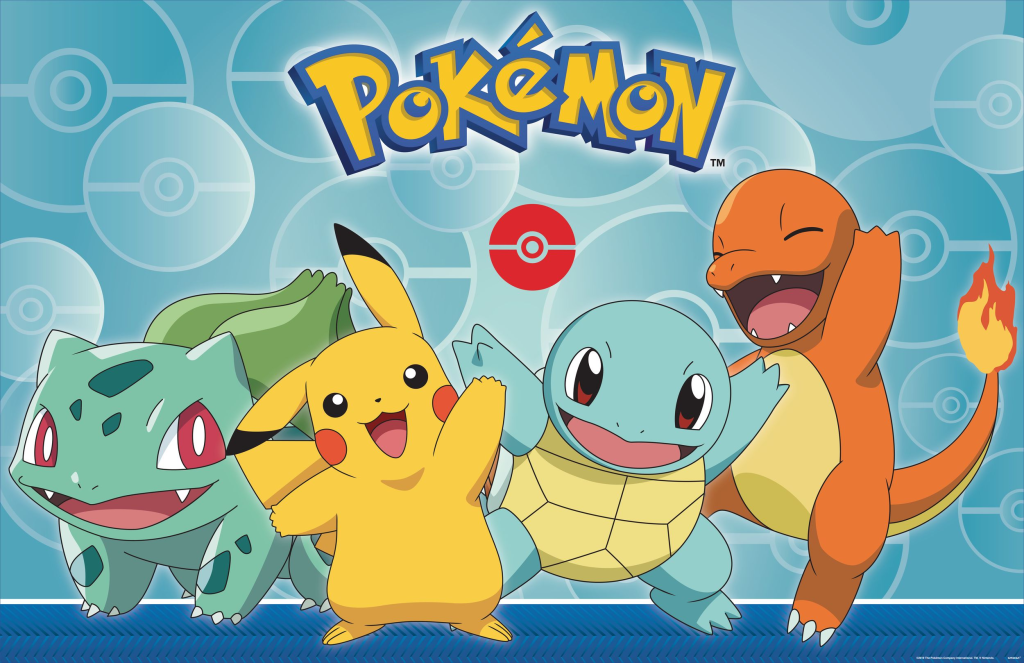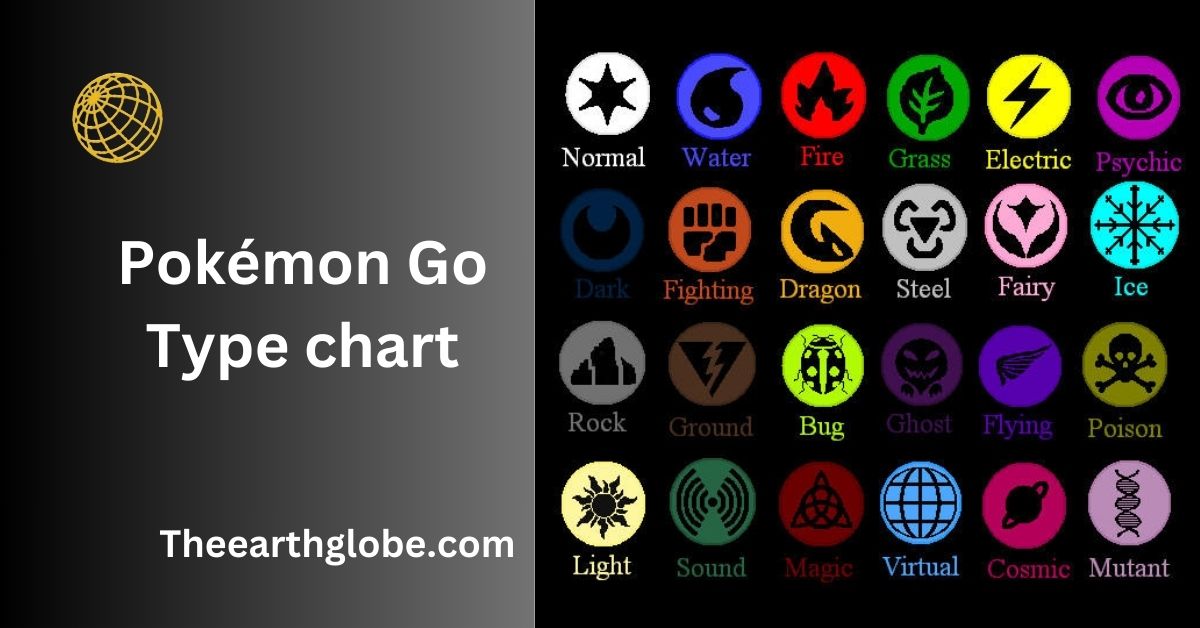Pokémon Go Type chart, Type effectiveness and weakness explained
In Pokémon Go, understanding the Pokémon Go Type chart is crucial for success in battles. Each Pokémon has its own type or types, and every type has strengths and weaknesses. Knowing which types are effective or weak against others will give you the upper hand in raids, gym battles, and PvP encounters. In this detailed guide, we will break down the Pokémon Go Type chart, explain type effectiveness, and help you understand how to exploit weaknesses to become a better Pokémon trainer.

What is the Pokémon Go Type Chart?
The Pokémon Go Type chart is a table that shows the effectiveness of one type of Pokémon against another. Pokémon types in the game include elements like Fire, Water, Grass, Electric, Dragon, and more. Each Pokémon can have one or two types, and each move a Pokémon uses also has a type. The type chart is designed to give players a clear understanding of how these types interact with one another.
By referring to the Pokémon Go Type chart, you can easily determine which type of Pokémon will have an advantage over your opponents in battles.
Post You Might Like: All Pokémon Go Eevee evolutions: How to evolve Eevee
Pokémon Types Explained
There are 18 types of Pokémon in Pokémon Go, and each one interacts differently with other types. These types are:
| Type | Strong Against | Weak Against |
|---|---|---|
| Normal | None | Fighting |
| Fire | Grass, Ice, Bug, Steel | Water, Rock, Fire, Dragon |
| Water | Fire, Ground, Rock | Water, Grass, Dragon |
| Grass | Water, Ground, Rock | Fire, Ice, Poison, Flying, Bug |
| Electric | Water, Flying | Ground, Grass, Electric, Dragon |
| Ice | Grass, Ground, Flying, Dragon | Fire, Fighting, Rock, Steel |
| Fighting | Normal, Ice, Rock, Dark, Steel | Poison, Flying, Psychic, Bug, Fairy |
| Poison | Grass, Fairy | Poison, Ground, Rock, Ghost |
| Ground | Fire, Electric, Poison, Rock, Steel | Grass, Ice, Water |
| Flying | Grass, Fighting, Bug | Electric, Ice, Rock |
| Psychic | Fighting, Poison | Psychic, Dark, Steel |
| Bug | Grass, Psychic, Dark | Fire, Fighting, Poison, Flying, Ghost, Steel, Fairy |
| Rock | Fire, Ice, Flying, Bug | Water, Grass, Fighting, Ground, Steel |
| Ghost | Psychic, Ghost | Dark |
| Dragon | Dragon | Steel, Fairy |
| Dark | Psychic, Ghost | Fighting, Dark, Fairy |
| Steel | Ice, Rock, Fairy | Fire, Fighting, Ground |
| Fairy | Fighting, Dragon, Dark | Poison, Steel |
Each type has strengths, weaknesses, resistances, and vulnerabilities. For example, Water-type moves are super effective against Fire-type Pokémon but weak against Grass-type Pokémon. Understanding these interactions will help you maximize the damage dealt in battles and minimize the damage received.

Type Effectiveness: Super Effective, Not Very Effective, and Immune
In Pokémon battles, three terms commonly come up when discussing type effectiveness:
Super Effective
When a move is super effective, it means that it deals double damage to the opponent. For example, a Water-type move used against a Fire-type Pokémon will be super effective. The damage multiplier is typically 1.6x, which makes a significant difference in battle.
Not Very Effective
Moves that are not very effective deal less damage. This happens when a Pokémon’s move is weak against the opponent’s type. For example, using a Fire-type move against a Water-type Pokémon will result in the move being not very effective. The damage multiplier in this case is typically 0.625x.
Immune
Some Pokémon types are immune to certain move types. When this happens, the move will do no damage at all. For instance, Ground-type Pokémon are immune to Electric-type moves, making them an excellent counter to Electric Pokémon.
People Also Read: Cute:jwpq3tudfrw= Pokemon
Pokémon Go Type Chart and Effectiveness Guide
Here is a quick overview of the Pokémon Go Type chart and how each type interacts with others:
- Normal: Strong against nothing; weak against Fighting; immune to Ghost.
- Fire: Strong against Grass, Ice, Bug, Steel; weak against Water, Rock, Fire, Dragon.
- Water: Strong against Fire, Ground, Rock; weak against Water, Grass, Dragon.
- Grass: Strong against Water, Ground, Rock; weak against Fire, Ice, Poison, Flying, Bug.
- Electric: Strong against Water, Flying; weak against Ground, Grass, Electric, Dragon.
- Ice: Strong against Grass, Ground, Flying, Dragon; weak against Fire, Fighting, Rock, Steel.
- Fighting: Strong against Normal, Ice, Rock, Dark, Steel; weak against Poison, Flying, Psychic, Bug, Fairy.
- Poison: Strong against Grass, Fairy; weak against Poison, Ground, Rock, Ghost.
- Ground: Strong against Fire, Electric, Poison, Rock, Steel; weak against Grass, Ice, Water.
- Flying: Strong against Grass, Fighting, Bug; weak against Electric, Ice, Rock.
- Psychic: Strong against Fighting, Poison; weak against Psychic, Dark, Steel.
- Bug: Strong against Grass, Psychic, Dark; weak against Fire, Fighting, Poison, Flying, Ghost, Steel, Fairy.
- Rock: Strong against Fire, Ice, Flying, Bug; weak against Water, Grass, Fighting, Ground, Steel.
- Ghost: Strong against Psychic, Ghost; weak against Dark.
- Dragon: Strong against Dragon; weak against Steel, Fairy.
- Dark: Strong against Psychic, Ghost; weak against Fighting, Dark, Fairy.
- Steel: Strong against Ice, Rock, Fairy; weak against Fire, Fighting, Ground.
- Fairy: Strong against Fighting, Dragon, Dark; weak against Poison, Steel.
Using the type chart can help you select the right Pokémon for each battle and ensure that you are dealing maximum damage while taking minimal damage.

How Type Matchups Affect Strategy
When battling in Pokémon Go, knowing your opponent’s types will give you a significant advantage. If you are facing a Fire-type Pokémon, for instance, using a Water-type Pokémon will give you a super effective advantage, allowing you to deal 1.6x damage. Conversely, using a Grass-type Pokémon against Fire would be unwise, as Fire-type moves would deal extra damage to your Grass Pokémon.
To build a strong team, always consider the type effectiveness of your Pokémon and their moves. Having a balanced team with multiple types will allow you to counter a wider range of opponents and be more successful in battles.
Dual Types and Their Impact
Many Pokémon in Pokémon Go are dual-type, meaning they have two types. This can either enhance their strengths or magnify their weaknesses, depending on the situation.
For example, Charizard is a Fire and Flying type. This dual typing makes Charizard resistant to Grass-type moves (since both Fire and Flying resist Grass), but it also makes Charizard doubly weak to Rock-type moves. A Rock-type move will deal 2.56x damage to Charizard, instead of the regular 1.6x from a single weakness.
When facing dual-type Pokémon, make sure to account for both of their types when selecting your moves to maximize effectiveness.
Using the Pokémon Go Type Chart in Raids and PvP
Raids
In Pokémon Go, raids are one of the key places where type effectiveness matters most. Raid bosses usually have significantly more health than standard Pokémon, and using the right types against them can mean the difference between victory and defeat.
For example, if you’re battling a Dragon-type raid boss, bringing Ice-, Fairy-, or Dragon-type Pokémon will help you deal more damage. Organizing your team around the raid boss’s weaknesses is crucial for success.
PvP Battles
In PvP battles, knowing the type chart can give you a huge advantage over your opponent. Since players often use meta-relevant Pokémon, having a solid understanding of how types interact will allow you to predict and counter your opponent’s moves.
For instance, if your opponent uses a Water-type Pokémon like Swampert, switching to a Grass-type like Venusaur will give you an edge in the battle. Understanding these matchups is key to winning PvP battles.
Resistances and How They Work
While type effectiveness focuses on strengths and weaknesses, it’s equally important to understand resistances. A Pokémon is resistant to certain types of moves based on its typing, meaning it will take less damage from them.
For example, a Steel-type Pokémon is resistant to Normal, Rock, and Fairy-type moves. When you use a move against a resistant Pokémon, the damage will be reduced by 0.625x, allowing the defending Pokémon to absorb more hits without fainting.
In battles, it’s just as crucial to exploit resistances as it is to target weaknesses. Building a team with resistances to common types will help your Pokémon last longer in battles.
Immunities in Pokémon Go
Certain Pokémon types have immunities to specific moves, meaning those moves deal no damage at all. For example, Flying-type Pokémon are immune to Ground-type moves. This immunity can be a game-changer in battles.
If your opponent is using Ground-type moves, switching to a Flying-type Pokémon will completely nullify the damage. Using immunities effectively can give you a significant edge in battles and help you outlast your opponents.
Building a Balanced Team Using the Pokémon Go Type Chart
A balanced team is key to success in Pokémon Go. By referring to the Pokémon Go Type chart, you can ensure your team is well-rounded and prepared for any battle.
Consider including Pokémon from multiple types to cover a variety of strengths and weaknesses. For instance, having a Fire-type Pokémon for Grass-type opponents, a Water-type for Fire-type foes, and an Electric-type for Water-type battles will give you flexibility in any situation.
Additionally, ensure that your Pokémon know moves that complement their type. A Water-type Pokémon with a Water-type move will deal extra Same-Type Attack Bonus (STAB) damage, further increasing your attack power in battles.
Type Interactions in Gym Battles
Understanding type interactions in gym battles is essential for taking control of gyms or defending them effectively. When attacking an opponent’s gym, using Pokémon with types that are super effective against the defending Pokémon will help you defeat them faster. For example, if you’re facing a Grass-type defender, bringing a Fire-type Pokémon will allow you to deal double damage. On the other hand, defending with Pokémon that resist common attacking types can make your team harder to defeat. A well-rounded understanding of the Pokémon Go Type chart will ensure you dominate gym battles.
Common Type Matchups in Pokémon Go
Some type matchups frequently appear in Pokémon Go due to the popularity of certain Pokémon. For example, Water, Grass, and Fire types often appear in battles, making Electric and Ice types strong counters. Dragon-type Pokémon are also popular, so having a Fairy-type or Ice-type in your team will give you an advantage. Learning the common type matchups will prepare you for most battles and help you quickly decide which Pokémon to use against your opponents. Always keep the Pokémon Go Type chart handy to quickly recall these interactions in key moments.

Final Thoughts on the Pokémon Go Type Chart
Understanding the Pokémon Go Type chart is essential for any trainer who wants to excel in battles, raids, and PvP. By knowing which types are super effective, not very effective, or immune to others, you can build a team that dominates your opponents and uses type advantages to win every time.
Make sure to refer to the Pokémon Go Type chart regularly when preparing for battles and adjust your strategy to exploit type weaknesses and resistances. With this knowledge in hand, you’ll become a more skilled and strategic Pokémon Go player!
Read To Know About: suicide squad kill the justice league
Frequently Asked Questions (FAQs)
What is the Pokémon Go Type chart?
- The Pokémon Go Type chart is a guide that shows the strengths and weaknesses of each Pokémon type against others, helping players maximize effectiveness in battles.
How many types are there in Pokémon Go?
- There are 18 types in Pokémon Go, including Fire, Water, Grass, Electric, Psychic, Dark, Fairy, and more, each with its unique strengths and weaknesses.
What does “super effective” mean in Pokémon Go?
- A move is “super effective” when it deals 1.6x more damage because it targets a type weak to it, such as Water against Fire.
What does “not very effective” mean in Pokémon Go?
- “Not very effective” moves deal less damage, about 0.625x, when used against a type resistant to that move, like Water against Grass.
How do immunities work in Pokémon Go?
- Certain Pokémon types are immune to specific move types, meaning they take no damage at all, such as Ground being immune to Electric attacks.
How does the type chart help in raids?
- Knowing the type chart helps you choose Pokémon that can exploit the raid boss’s weaknesses, increasing your chances of success.
How do dual types work in Pokémon Go?
- Dual-type Pokémon can have two types, affecting how they take damage. They may resist or be weak to multiple types at once, like Charizard’s dual Fire/Flying type.
What is Same-Type Attack Bonus (STAB)?
- STAB happens when a Pokémon uses a move of its own type, giving a 1.2x damage boost, such as a Fire-type Pokémon using a Fire-type move.
Which Pokémon types are immune to Ground-type moves?
- Flying-type Pokémon are completely immune to Ground-type moves, making them perfect counters in battles against Ground-type opponents.
How can I use the Pokémon Go Type chart in PvP battles?
- The type chart helps you predict your opponent’s weaknesses and resistances, giving you an edge by selecting the best counter Pokémon for each matchup.






